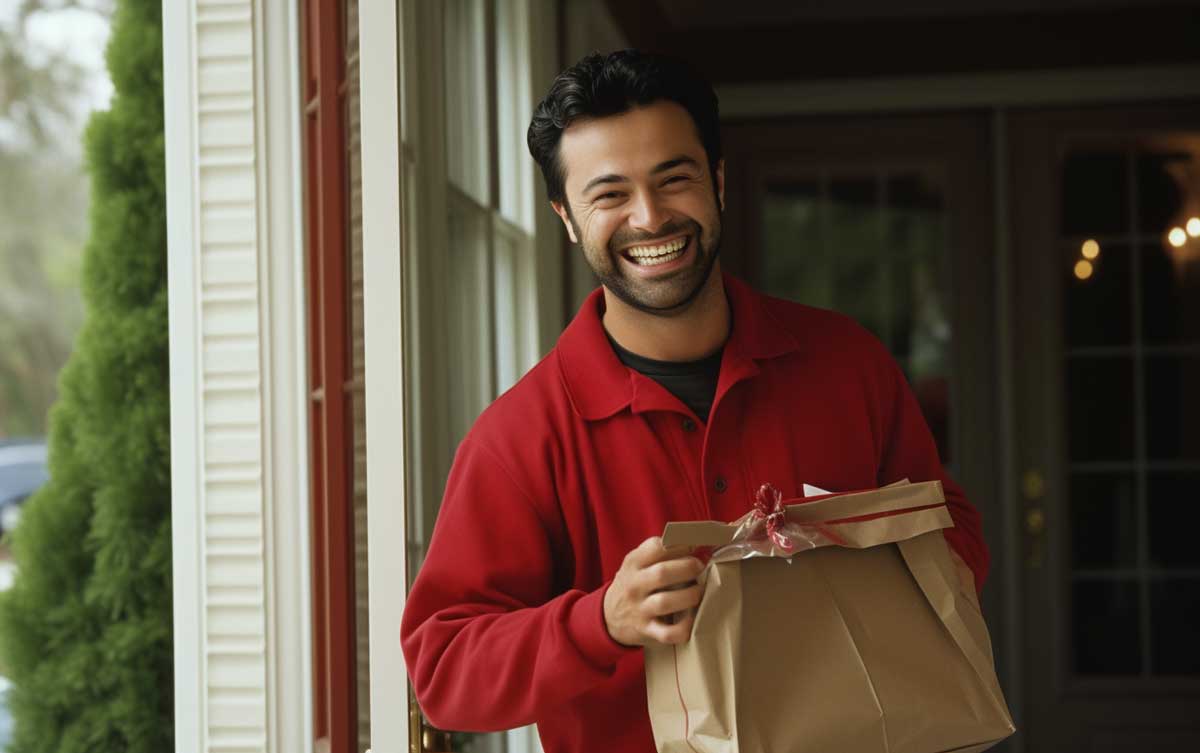Delivery drivers have unique needs when it comes to choosing a vehicle for their work. Whether it's delivering food or packages, having the right car can significantly impact their efficiency and experience on the job. In this article, we will discuss the advantages of specific cars for delivery drivers and why they are the best choice for this profession.
From ample cargo space to excellent gas mileage, these vehicles offer the features and capabilities that delivery drivers need to successfully navigate their daily deliveries. We will also touch on the importance of fuel efficiency, maintenance costs, insurance coverage, and tax write-offs, highlighting how these factors can contribute to the overall savings and business success of delivery drivers.
So, if you're a delivery driver looking for the perfect car to enhance your work experience, read on to discover the top options available to you.
Choosing the Right Vehicle for Delivery Services
Choosing the right vehicle for delivery services is crucial for success in the gig economy. Different delivery companies like DoorDash, Instacart, and Amazon Flex have varying requirements when it comes to the type of vehicle you can use. While some services allow the use of bikes, scooters, or motorcycles, others necessitate a car.
When considering a car for delivery services, there are several key factors to keep in mind. First and foremost, ample cargo space is essential. You need a vehicle that can comfortably accommodate all your deliveries, including large or bulky items. Trunk space and overall storage options are important considerations.
In addition to cargo space, fuel efficiency is a vital aspect. Delivery drivers rack up a significant number of miles on the road, so excellent gas mileage is vital to save money on fuel expenses. Hybrid engines or turbocharged engines can offer excellent fuel efficiency for a cost-effective delivery experience. Furthermore, maintenance costs and insurance rates should be taken into account when choosing a car for delivery purposes.
While bikes, scooters, or motorcycles may be suitable for some delivery services, a car offers versatility and the ability to handle a wide range of delivery types. Whether you're delivering food, groceries, or other items, a car provides the necessary convenience and reliability. It also allows for ample space to carry necessary delivery equipment such as food delivery bags.
In summary, choosing the right vehicle for delivery services requires careful consideration of cargo space, fuel efficiency, maintenance costs, and insurance rates. While bikes and scooters may work for certain services, a car is often the most practical choice for DoorDash, Instacart, Amazon Flex, and similar delivery companies.
Honda CR-V Overview
The Honda CR-V is a popular choice for delivery drivers due to its spacious cargo area and fuel efficiency. With its ample cargo space and trunk space options, the CR-V can easily accommodate all your delivery needs, whether it's transporting large or bulky items. Its excellent gas mileage makes it an ideal choice for delivery drivers looking to save money on fuel expenses. The CR-V also offers a reliable and comfortable ride, making it the perfect delivery vehicle for long hours on the road. With its reputation for reliability and low maintenance costs, the Honda CR-V is a top choice among delivery drivers looking for a dependable and cost-effective option.
Smooth Ride
The Honda CR-V is the perfect choice for delivery drivers looking for a smooth ride on the job. With its exceptional suspension system and comfortable interior features, this vehicle offers a truly enjoyable driving experience.
The CR-V's suspension system is designed to provide a smooth and stable ride, even on rough roads or uneven surfaces. Whether you're navigating through city streets or delivering in tight spaces, the CR-V's suspension absorbs bumps and keeps the vehicle steady, ensuring a comfortable drive.
Inside the CR-V, you'll find a spacious and well-designed cabin with features that prioritize driver comfort. Plush seating, ample legroom, and ergonomic controls make long hours on the road feel like a breeze. The quiet and refined interior also enhances the overall driving experience, allowing delivery drivers to focus on their work without distractions.
A smooth ride offers numerous advantages for delivery drivers. Firstly, it reduces fatigue, allowing drivers to stay alert and focused throughout their shifts. Secondly, a smooth ride helps protect fragile cargo from potential damage caused by excessive bumps or vibrations.
In conclusion, the Honda CR-V provides a smooth ride and a comfortable driving experience for delivery drivers. Its exceptional suspension system and interior features make it an excellent choice for those seeking reduced fatigue and optimal care for their cargo.
Plenty of Cargo and Trunk Space
When it comes to ample cargo and trunk space, the Honda CR-V, Toyota RAV4, and Subaru Outback are hard to beat. These hatchback-style SUVs offer spacious interiors that are perfect for delivery drivers who need to transport large orders or cater to multiple customers at once.
The Honda CR-V boasts a roomy cargo area with a maximum of 75.8 cubic feet of space when the rear seats are folded down. The Toyota RAV4 offers a generous 69.8 cubic feet of cargo space, and the Subaru Outback provides up to 75.7 cubic feet of room. With such expansive cargo areas, delivery drivers can easily fit everything they need for their deliveries, from multiple food orders to packages and supplies.
The advantages of having plenty of cargo and trunk space are numerous. Firstly, it saves time, as delivery drivers can make fewer trips and deliver more items in a single outing. Additionally, loading and unloading deliveries becomes a breeze, thanks to the wide openings and low load floors in these vehicles. Delivery drivers can efficiently organize their cargo and easily access it when needed.
In conclusion, the Honda CR-V, Toyota RAV4, and Subaru Outback offer ample cargo and trunk space, making them ideal choices for delivery drivers. With their spacious interiors, these vehicles ensure that drivers can transport large orders and cater to multiple customers without any hassle.
Maneuvering Tight Spaces
Maneuvering tight spaces is crucial for delivery drivers, as they often encounter narrow streets, crowded parking lots, and congested areas. Being able to navigate these tight spaces efficiently can save valuable time and prevent accidents. Here are some essential tips to help delivery drivers maneuver tight spaces effectively:
1. Choose a nimble vehicle: Opt for a compact car or a vehicle with a small turning radius. These vehicles are easier to maneuver and can squeeze into tight spots more comfortably.
2. Practice parallel parking: Parallel parking is a skill every delivery driver should master. Practice in quiet areas to improve your confidence and accuracy. It's also helpful to use your side mirrors and rearview cameras for better visibility.
3. Take advantage of technology: Many modern vehicles come equipped with features like parking sensors and rearview cameras. Utilize them to gauge your proximity to surrounding objects and park with precision.
4. Use caution when navigating narrow streets: When faced with narrow streets, maintain a slow speed and be cautious of parked cars, pedestrians, and other obstacles. Pay attention to mirrors and use them to maneuver safely around objects.
5. Plan your routes in advance: Avoid congested areas if possible by planning your routes ahead of time. Make use of GPS navigation apps to find alternate routes and avoid busy streets.
By implementing these tips, delivery drivers can confidently maneuver tight spaces and deliver their packages efficiently and safely. Remember, patience, practice, and proper vehicle selection are key to successfully navigating congested areas.
Fuel Efficiency and Maintenance Costs
When choosing the right vehicle for delivery services like DoorDash, it's important to consider factors such as fuel efficiency and maintenance costs. Opting for a car with excellent gas mileage can save delivery drivers a significant amount of money on fuel expenses in the long run. Look for vehicles with hybrid engines or turbocharged engines, as they tend to be more fuel-efficient.
Maintenance costs are another crucial consideration. It's essential to choose a reliable vehicle that won't require frequent trips to the mechanic. Research the maintenance history and reputation of different car models to ensure you select one with reasonable maintenance costs.
One advantage of using a vehicle for delivery purposes is that many of the associated expenses can be deducted as business expenses. This can include costs such as fuel, insurance premiums, and maintenance and repair expenses. Keeping a mileage log is a helpful way to track business-related miles driven, which can further maximize tax deductions. Using a mileage tracking app like Everlance can simplify the process by automatically recording and categorizing your mileage, making it easier to claim deductions accurately.
By prioritizing fuel efficiency and considering maintenance costs, delivery drivers can not only save money on gas but also optimize their business expenses and maximize tax deductions. Ultimately, choosing a vehicle that offers both fuel efficiency and manageable maintenance costs can significantly contribute to a delivery driver's overall profitability.
Insurance Companies and Rental Companies
Insurance companies and rental companies play a significant role in the daily operations of delivery drivers. Firstly, insurance companies provide insurance coverage to protect delivery drivers against any unforeseen accidents or damages that may occur while on the road. This coverage is crucial for protecting both the driver and the company they are delivering for.
In the case of rental companies, they offer a convenient solution for delivery drivers who may not want to use their own personal vehicles or who may need an additional vehicle to meet the demands of their delivery service. Rental companies often offer flexible rental terms and a wide range of vehicles to choose from, ensuring that delivery drivers can find a suitable vehicle to meet their needs.
When it comes to DoorDash, they provide a contingent liability policy for their drivers. This policy protects drivers from any damages or liabilities that may occur during active deliveries. However, it's important to note that this coverage does not include collision coverage. Delivery drivers should consider purchasing their own collision coverage to ensure they are fully protected in the event of an accident.
Aside from vehicle coverage, delivery drivers should also consider insurance coverage for personal accessories used during their deliveries, such as phone chargers and mounts. These accessories are essential for efficient delivery operations, and insurance coverage for these items can provide financial protection in case of loss or damage.
Furthermore, it's worth mentioning that both insurance premiums and rental expenses can be claimed as tax deductions for delivery drivers. These deductions can help reduce the overall tax burden for drivers and make their delivery business more financially viable.
In conclusion, insurance companies and rental companies are crucial for delivery drivers, providing coverage and flexibility in their daily operations. Drivers should carefully consider their insurance needs, including additional collision coverage, and take advantage of available tax deductions to ensure their business is protected and financially viable.
Financial Considerations for Delivery Drivers
As a delivery driver, there are several financial considerations that you need to keep in mind to ensure the profitability and sustainability of your business. From vehicle expenses to insurance coverage, understanding and managing these costs can help you make informed decisions and maximize your income.
Vehicle Expenses: The choice of vehicle can have a significant impact on your bottom line. Look for a car that offers excellent gas mileage and low maintenance costs to save money on fuel and repairs. Consider options like the Honda CR-V, known for its smooth ride and ample cargo space, perfect for carrying deliveries in tight spaces.
Insurance Coverage: It's crucial to have proper insurance coverage to protect yourself and your business from any potential risks and liabilities. While DoorDash provides contingent liability coverage during active deliveries, it's advisable to have collision coverage as well. Additionally, ensure you have coverage for personal accessories used for deliveries to safeguard against loss or damage.
Tax Deductions: Take advantage of various tax deductions available to delivery drivers. Expenses like insurance premiums, rental expenses, and even personal accessories used for deliveries can be claimed as deductions, reducing your overall tax burden and increasing your net income.
By carefully considering and managing these financial aspects, you can optimize your earnings and set yourself up for success in the competitive world of delivery driving.
Light-duty Trucks or Vans?
When it comes to choosing the best vehicle for DoorDash and other delivery services, there are several factors to consider. One important consideration is whether to opt for a light-duty truck or a van. Both options have their advantages and disadvantages, depending on the specific needs of the driver. Light-duty trucks, such as the Honda CR-V, offer excellent gas mileage and plenty of cargo space, making them a popular choice for delivery drivers. They are often more fuel-efficient than vans and can easily navigate tight spaces in busy city streets. On the other hand, vans provide ample cargo space options, allowing for more storage capacity and the ability to accommodate larger orders. Vans also tend to have more spacious interiors, providing additional comfort during long delivery shifts. Ultimately, the choice between a light-duty truck and a van depends on the individual driver's preferences and the specific demands of their delivery business.
Hybrid Engines, Turbocharged Engines, or Electric Scooters?
Hybrid engines, turbocharged engines, and electric scooters are all excellent options for delivery drivers looking to save money on fuel costs and reduce their environmental impact.
Hybrid engines combine the power of a gasoline engine with the efficiency of an electric motor. This results in improved fuel efficiency, meaning drivers can go longer between fill-ups and spend less money on gas. Maintenance costs for hybrid engines tend to be lower because they require less frequent oil changes and brake pad replacements. However, hybrid cars can be more expensive upfront and may require specialized maintenance.
Turbocharged engines, on the other hand, offer increased power and performance. They use a turbocharger to compress air and deliver more oxygen to the engine, resulting in a boost in horsepower. This can be beneficial for delivery drivers who need to navigate tight spaces or deliver goods quickly. However, turbocharged engines tend to have lower fuel efficiency compared to other options and may require more maintenance in the long run.
Electric scooters are a highly efficient and eco-friendly option for delivery drivers. They produce zero emissions and can be charged at home or at charging stations, saving money on gas. Electric scooters also have lower maintenance costs as they have fewer moving parts compared to traditional vehicles. However, they have a limited range and may not be suitable for longer delivery routes. Additionally, charging infrastructure may be limited in certain areas.
Ultimately, the choice between hybrid engines, turbocharged engines, and electric scooters depends on the specific needs and priorities of delivery drivers. It is important to consider factors such as fuel efficiency, maintenance costs, overall performance, and the availability of charging infrastructure to make the best decision for your delivery service.
Cost Comparison of Vehicles Used for Delivery Services
When it comes to delivery services, choosing the right vehicle is crucial for cost efficiency. Here's a cost comparison of commonly used vehicles:
1. Hybrid Engines: Hybrid cars offer excellent fuel efficiency, resulting in lower gas expenses. Although the initial purchase cost may be higher, maintenance costs tend to be lower due to less frequent oil changes and brake pad replacements. Additionally, insurance rates for hybrid vehicles are often lower since they are considered more environmentally friendly.
2. Turbocharged Engines: Turbocharged engines provide increased power and performance, making them suitable for navigating tight spaces and delivering goods quickly. However, these engines have lower fuel efficiency compared to hybrids, leading to higher fuel costs. Maintenance costs may also be higher due to the complexity of turbocharged engines, and insurance rates could be slightly elevated due to the higher performance potential.
3. Electric Scooters: Electric scooters are an incredibly efficient and eco-friendly option for delivery drivers. They require minimal maintenance and produce zero emissions. However, they have a limited range and may not be suitable for longer delivery routes. Insurance rates for electric scooters are typically lower than for other vehicles because they are considered low-risk.
4. Light-Duty Trucks and Cargo Vans: These vehicles provide ample cargo space, making them suitable for large deliveries. Initial purchase costs for trucks and vans can vary depending on the brand and features. Fuel efficiency tends to be lower compared to smaller vehicles, resulting in higher gas expenses. Maintenance costs and insurance rates may be higher for trucks and vans due to their size and usage.
When considering vehicles for delivery services, it's essential to consider the initial purchase cost, fuel efficiency, maintenance costs, and insurance rates to determine the most cost-effective option for your business.







